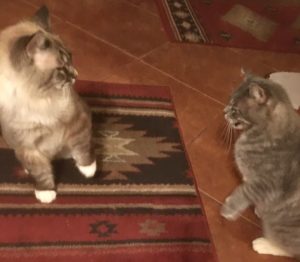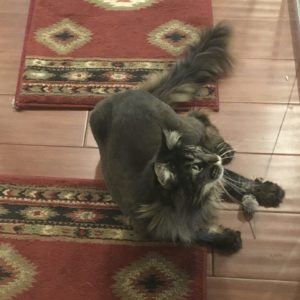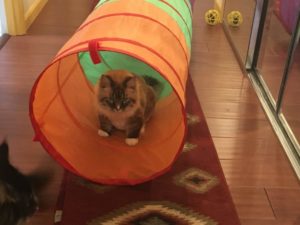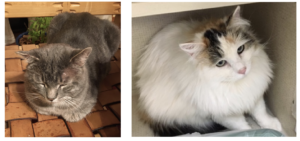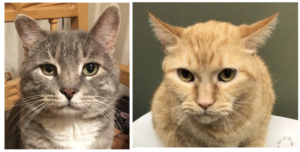Cats will play with toys on their own and often enjoy an interactive session of play with their owners. You may also see cats playing with other cats.
“Play fighting” is a way for kittens to hone their fighting and hunting skills. This social play peaks around 3 to 4 months of age, although adult cats will still “play fight”. Both feral and pet cats may “play fight” with other cats they are bonded with or familiar with. It is fun to watch two familiar cats wrestling, chasing, and pouncing on each other.
Cats Playing with Other Cats
- claws are sheathed
- chirrups and trills or no vocalizing
- no hissing or growling
- cats will take turns chasing and being chased
- cats will roll onto their backs
- body language is relaxed – ears are forward
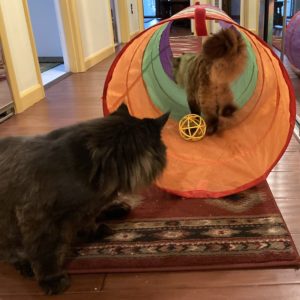
If your cats are inclined to play with each other, cardboard boxes, cat tunnels, furniture can be places for one cat to hide and pounce on one another.
If play gets out of hand…
Kittens and young cats often don’t seem to know when enough’s enough. Sometimes things get out of hand.
What may not be play…
- one cat exclusively chases another
- one cat blocks the other from going through a hall or door
- one cat backs another into a corner

Gus and Marley tolerate each other with the occasional spat.
What to watch for:
- Be alert to direct stares between cats at “play”
- Body language: ears flattened or out to the side, fur on end, lip licking
- Body posture: aggressor may have an arched back, hair on end, slowly advance on the “victim”
- “victim”: feet under the body, may slowly move away from the “attacking” cat
- hissing or growling
Watch this short video of two cats who tolerate each other but are not affiliated.
You may want to manually advance the video to catch the action. Gus (grey cat) and Marley have a brief spat that could be mistaken for play.
The two cats look to the side, then look directly at each other, then look to the side again. Their ears go out to the side, Gus lashes out. He and Marley exchange punches, then Gus retreats and hisses. We need to monitor this duo and ensure that conflict does not increase.
What you can do…
- DO intercept a hostile stare or distract the aggressive cat with a wand toy or laser pointer.
- DO have a sturdy piece of cardboard and a towel in a convenient place to help separate fighting cats
- DO herd the cats away from each other with a sheet of cardboard into separate rooms.
- DO isolate cats if necessary and allow them to “cool down”; reintroduce them slowly when they are calmer
- Have a sturdy pair of leather work gloves to use with a towel as a last resort -better to herd the cats away from each other with a sheet of cardboard than try to pick them up
- SEEK MEDICAL ATTENTION IF BIT! Cat bites easily become infected
- Consult your veterinary professional if fighting is frequent and injury to humans or other pets occurs
